The national park that draws mushroom hunters from around the world
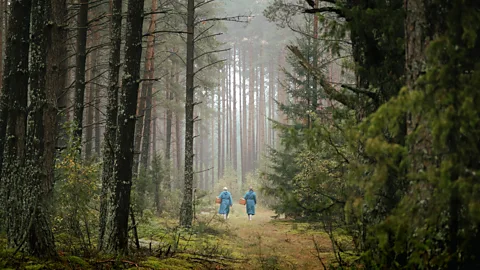 Harry Taylor
Harry TaylorIn Lithuania’s Dzūkija National Park, losing yourself amongst the pine trees while hunting for mushrooms is an occurrence so common it has its own word: "nugrybauti".
The thickening canopy of trees swallowed the last trace of sunlight, and with it, our sense of direction. Lifting our gaze from the forest floor, we noticed that the surrounding woods – minutes ago a familiar landscape of sun-dappled clearings and winding tracks – had been replaced by an expanse of dense brown shadows, suddenly foreign and disorienting.
Our guide Tom Baltušis, owner of the foraging tour company Dzūkijos Uoga, had noticed it too. "In Lithuania, we have a specific word for this sensation. Nugrybauti: lost in the forest whilst hunting for mushrooms."
To a nation so fixated with foraging, these woods in Djūkija National Park in southern Lithuania hold a particular allure. Just an hour's drive from the capital Vilnius, the park – Lithuania's largest – is blanketed by dense pine forests, concealing a sprawling tapestry of bogs, black alder swamps and smoky marshland. It's a protected landscape that supports an astonishing abundance and variety of edible mushrooms.
Foraging has long been a cornerstone of local life here, and the practice – once a necessity but now a beloved pastime – has shaped the region's living habits, cuisine and economy over the centuries.
Now, Djūkija's estimated 300 varieties of edible mushrooms draw mycophiles from around the world to this quiet corner of the Baltics, joining locals on the hunt for some of Europe's largest, rarest and finest fungi amidst unending tracts of pristine forest.
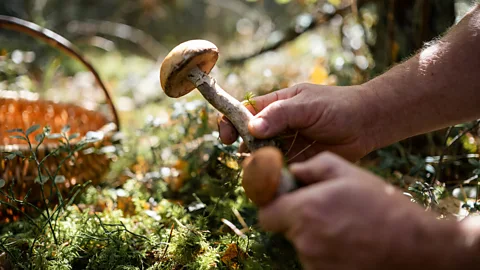 Harry Taylor
Harry TaylorA haven for fungi
Djūkija's unique soil composition was shaped thousands of years ago when ice age glaciers left behind vast sand deposits across the region. The moist, well-draining ground conditions that resulted provide the ideal environment for extensive fungal networks (mycelium) to thrive underground, exchanging nutrients with the park's millions of pine trees in a process known as ectomycorrhiza.
"It's a paradise for mushrooms, but this sandy, infertile soil made agriculture impossible here," Baltušis explains. "We can only grow a small handful of crops, so the primary source of food and income has always been the forest. For centuries, families hunted, foraged for berries and collected mushrooms, which not only provided sustenance for themselves but also allowed them to sell forest produce to surrounding regions."
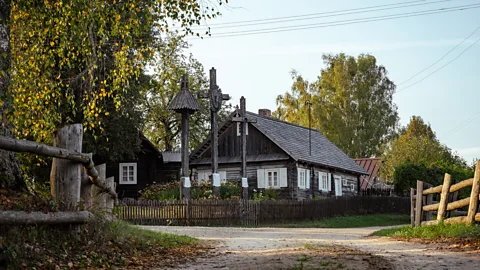 Harry Taylor
Harry TaylorHistoric mushroom trade
Remnants of Djūkija's booming mushroom trade remain in isolated villages like Zervynos (pictured above), where locals once sourced, dried and cured the region's fungi to be sent to chefs and Soviet elites in Vilnius, Warsaw and St Petersburg. Grūtas Park, located 40km to the west, is an exhibition of USSR-era monuments collected by Viliumas Malinauskas, Lithuania's "Mushroom Millionaire", whose business exporting Dzūkija's mushrooms to the rest of Europe made him, for a time in the 1990s, one of the country's wealthiest men.
Today, the dozens of cars dotting the highway, bonnets heavy with boxes of chanterelles, signal Djūkija's more modest mushroom trade. One roadside vendor, Agnė, tells me that "foraging was once a means of survival. Now, it's simply a way of life."
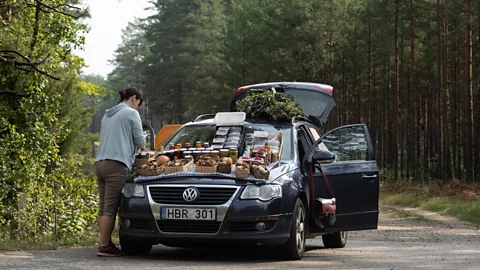 Harry Taylor
Harry TaylorLocal expertise
Grybautojas (mushroom hunters) here are among Europe's most discerning, closely tracking rainfall, humidity and even the lunar cycle, believed by some to stir up groundwater and influence the fructification of their favourite varieties. Most pick more than they can eat, selling the excess to passing travellers.
"Foragers in Dzūkija know exactly how to find what they're looking for," said Baltušis, as we picked our way through a clearing. "Porcini like to grow near white moss and oak trees; red-capped scaler stalks prefer birch groves; chanterelles enjoy growing among junipers."
"And of course, every local keeps their favourite spots a sworn secret. If you ask anybody in Djūkija where to find the best mushrooms, they'll simply reply, 'In the forest'."
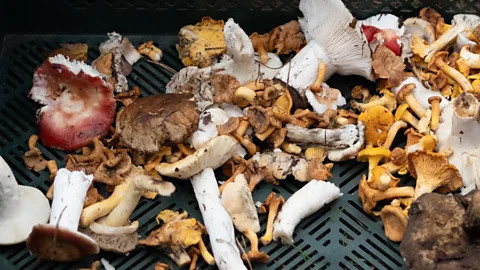 Harry Taylor
Harry TaylorA taste of variety
Baltušis tells me that an estimated 300 varieties of mushrooms are consumed across Djūkija's dozens of villages and hamlets, and he lists them off as we wind through the trees. "Chantarelles, milkcap, honey fungus, boletus, chicken of the woods." But pinning down an exact number is difficult, he adds, "as some species considered poisonous elsewhere are often enjoyed by the park's most experienced foragers".
Species like honey fungus, considered mildly toxic in countries like Norway, are parboiled by some in Djūkija to safely consume in soups; whilst false morels – deep brown, wrinkled and often deadly when eaten raw – are among the first spring mushrooms prized by seasoned grybautojas in Dzūkija, boiled intensively between three to five times to fully extract any toxins.
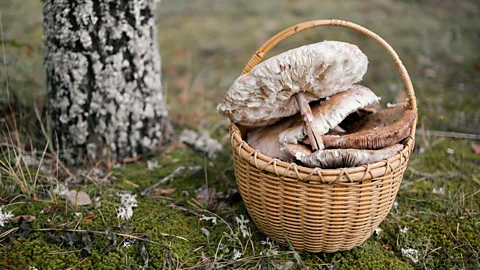 Harry Taylor
Harry TaylorA destination for mycophiles
"The sheer abundance and variety of mushrooms here, along with the beautiful natural scenery, is what attracts enthusiasts from all over the world," says Regina Baltušienė, who co-owns Dzūkijos Uoga with Tom, her partner.
Specialising in eco-tourism, they lead foraging excursions from their traditional hamlet homestead and offer expert guidance in safely hunting for baskets of Djūkija's wild mushrooms, hosting foragers from around the world to help them uncover the region's very best.
"Many guests coming to Lithuania are fascinated by our leisure activity," says Tom. "In a globalising world, it is becoming increasingly difficult to find traditions so specific to one particular region, but mushroom picking offers the perfect chance to experience Djūkija's culture and nature simultaneously".
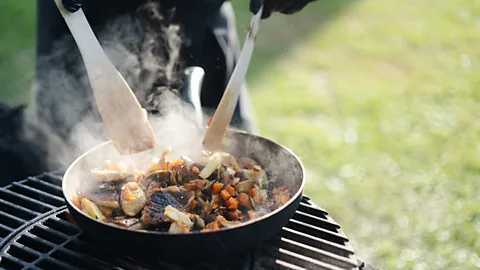 Harry Taylor
Harry TaylorForest floor to fork
As mushroom season gets underway in late August, locals in Djūkija seize the opportunity to incorporate the park's fungi – whether dried, cured, crushed or powdered – into the country's most popular meat, fish and potato dishes before December brings foraging to an abrupt, frosty end.
The flavorful bavarykas mushroom is stuffed into cepelinai (parcels of thick potato dough); while grybų sriuba (Lithuania's ubiquitous mushroom soup) and kugelis (potato pudding) take on Djūkija's abundant porcini and boletus. Butter-fried russulas, saffron milk caps and parasol mushrooms, with their distinctive meat-like flavour, are all popular appetisers.
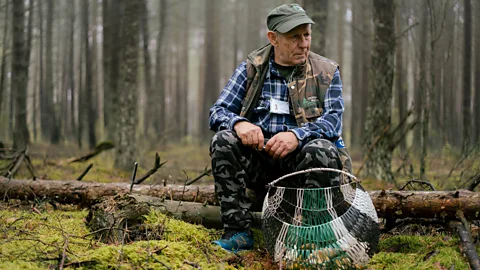 Harry Taylor
Harry TaylorForaging freely
"Here, everyone can freely pick mushrooms and berries, except in state-protected areas and territories," says Regina. The country's "Right to Roam" laws, based on the principle of "everyman's right" – the legal concept that argues that the wilderness ought to remain open to all for recreational activity – allow citizens to access natural resources, such as Djūkija's mushrooms and berries, even on private property, so long as the privacy of homeowners is respected.
"Indeed, in Lithuania, forest owners are required to allow everyone to pick mushrooms on their land," she adds.
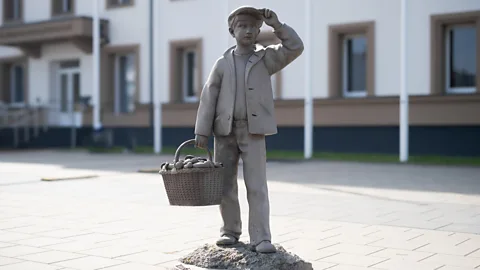 Harry Taylor
Harry TaylorThe next generation
"Mushroom picking is a part of life and identity for the residents of Dzūkija, who have been foraging since childhood, learning about every species from their parents and grandparents," says Regina. Education centres in the regional hub of Varėna, affectionately referred to as Djūkija’s "Capital of Mushrooms", and the town's annual Mushroom Festival are part of an effort to keep the park’s traditions alive, teaching younger generations about the cultural significance and lifestyle benefits of foraging.
"If our mushroom-picking tradition is not preserved, the region will lose its identity and future generations will miss out twofold," Regina says. "On both a wonderful pastime and the delicious dishes made from Djūkija's freshly gathered wild mushrooms."
--
If you liked this story, sign up for The Essential List newsletter – a handpicked selection of features, videos and can't-miss news, delivered to your inbox twice a week.
